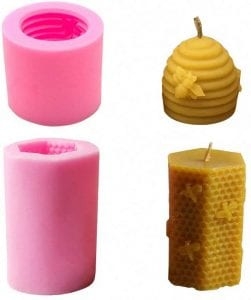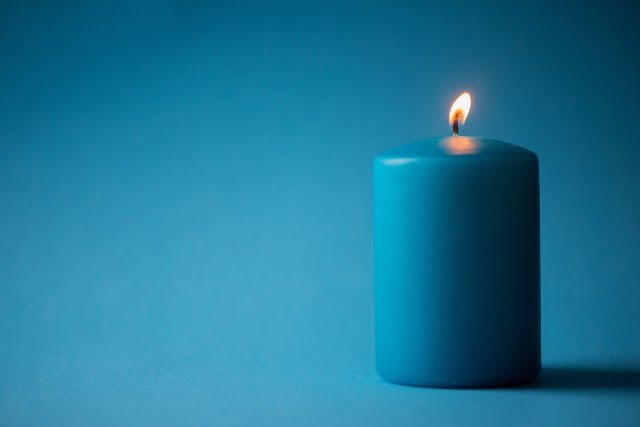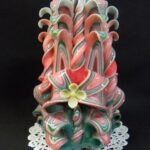Candle making has been a beloved craft for centuries, offering both practical lighting solutions and artistic expression. Whether you are new to the world of candle making or looking to refine your skills, this beginner’s guide will provide you with essential candle making information. From the history of candle making to the various tools and supplies needed, this article will cover everything you need to know to start creating your own handcrafted candles at home.
Dating back to ancient times, candle making has evolved from simple tallow candles to a wide range of techniques and materials used today. Understanding the history of candle making can provide insight into traditional methods as well as inspiration for modern approaches. By exploring different types of wax, fragrance oils, and essential oils, you can customize your candles to create unique scents and textures that suit your preferences.
In the following sections, we will delve into the fundamental aspects of candle making, including step-by-step guides on how to make your own candles at home, safety tips to prevent accidents during the process, and troubleshooting common problems that may arise. Whether you prefer traditional techniques or are interested in exploring more advanced tips and tricks, this article will help you navigate the world of candle making with confidence and creativity.
History of Candle Making
Candle making has a rich history that dates back to ancient times, with civilizations like the Egyptians and Romans using candles for various purposes. In ancient Egypt, candles were made from animal fat and were used for religious ceremonies and lighting homes. The Romans, on the other hand, utilized tallow and beeswax to create candles that illuminated their homes and provided light during nighttime festivities.
As time progressed, candle making techniques evolved, leading to the introduction of new materials such as paraffin wax in the 19th century. Paraffin wax quickly became a popular choice due to its affordability and easy availability. However, in recent years, there has been a shift towards using more natural alternatives like soy wax and beeswax due to their eco-friendly properties.
In modern times, candle making has become an art form with endless possibilities for creativity. From intricate designs to unique fragrances, candle makers now have a wide array of tools and supplies at their disposal to create beautiful and personalized candles. Whether you are a beginner or an experienced candle maker, learning about the history of candle making can provide valuable insights into this timeless craft.
Essential Tools and Supplies for Candle Making
When it comes to candle making, having the right tools and supplies is essential to ensure a successful and enjoyable crafting experience. Whether you are a beginner or an experienced candle maker, having the right equipment can make all the difference in the final outcome of your candles. Here is a list of some of the essential tools and supplies you will need for candle making:
- Double boiler or microwave-safe container: This is necessary for melting wax safely without direct heat.
- Thermometer: To monitor the temperature of the melted wax and ensure it is at the right temperature for adding fragrance oils or dyes.
- Candle wicks: These come in various sizes and materials, such as cotton, wood, or hemp, and are essential for creating the wick of your candle.
- Fragrance oils or essential oils: For adding scents to your candles and creating a pleasant aroma when burned.
In addition to these basic tools, there are also supplies that are crucial for candle making:
- Wax: The main ingredient in any candle, you can choose from paraffin wax, soy wax, beeswax, or gel wax depending on your preference.
- Container or molds: To pour your melted wax into and create the shape of your candle. Choose from glass jars, metal tins, silicone molds, or other containers based on your desired result.
- Dyes or colorants: If you want to add color to your candles, you will need dyes or colorants specifically made for candle making.
- Stirring utensils: Such as a wooden stick or spoon for mixing in fragrance oils or dyes with the melted wax.
Having these essential tools and supplies ready before you start your candle making project will help streamline the process and ensure that you have everything you need to create beautiful and fragrant candles at home. Remember to follow proper safety precautions while working with hot wax and other materials to prevent accidents and enjoy a stress-free crafting experience.
Types of Wax for Candle Making
Paraffin Wax
Paraffin wax is one of the most commonly used waxes in candle making due to its affordability and ease of use. It is a byproduct of petroleum refining and is known for its ability to hold color and fragrance well. However, paraffin wax does produce some soot when burned, which can be a downside for some users. It also has a higher melting point compared to soy or beeswax, which can affect the burn time of candles.
Soy Wax
Soy wax is a popular choice for environmentally conscious candle makers as it is derived from soybean oil, making it a renewable resource. Soy wax burns cleaner than paraffin wax, producing less soot and extending the life of your candles. Additionally, soy wax holds fragrance well and has a lower melting point, resulting in a longer burning time for your candles.
Beeswax
Beeswax is another natural option for candle making that has been used for centuries. It offers a natural honey-like scent and produces a warm glow when burned. Beeswax candles are known for their long burn times and clean-burning properties.
However, beeswax can be more expensive than soy or paraffin wax, making it less cost-effective for large-scale candle production. Additionally, beeswax can be challenging to work with due to its high melting point, requiring careful handling during the candle-making process.
When choosing the right type of wax for your candles, consider factors such as cost, burn time, fragrance retention, and environmental impact to determine which option best suits your needs and preferences in candle making.Information.
Fragrance Oils vs Essential Oils
When it comes to making candles, choosing the right scents is a crucial aspect of the process. Fragrance oils and essential oils are two popular choices for adding scents to your candles, each offering unique benefits and considerations. Understanding the differences between these options can help you create candles that not only look beautiful but also smell amazing.
Fragrance Oils
Fragrance oils are synthetic compounds created to mimic specific scents, providing a wide range of options for candle makers. These oils are often more affordable than essential oils and come in countless varieties, from traditional floral and fruity fragrances to more complex blends. Because fragrance oils are made in a lab, they offer a consistent scent that does not change over time. However, some individuals with sensitivities may find that fragrance oils trigger allergies or irritations.
Essential Oils
Essential oils, on the other hand, are natural plant extracts known for their therapeutic properties as well as their pleasant aromas. While essential oils tend to be more expensive than fragrance oils, they offer a more natural alternative with potential health benefits.
Essential oils come from various plants and flowers, each with its own unique characteristics and properties. Keep in mind that essential oils can vary in quality, so it’s important to choose reputable sources for the best results in your candle making endeavors.
When deciding between fragrance oils and essential oils for your candles, consider factors such as cost, personal preferences, and any potential health considerations. Ultimately, both options have their merits depending on your goals as a candle maker. Experimenting with different scents can help you discover the perfect combination that resonates with you and your customers, creating candles that not only look visually appealing but also fill the room with delightful fragrances.
Step-by-Step Guide to Making Your Own Candles at Home
Candle making is a versatile and enjoyable craft that allows you to create unique and personalized candles for yourself or as gifts for others. To begin your candle making journey, it is essential to gather the necessary tools and supplies.
Some of the basic items you will need include wax, wicks, a double boiler or microwave-safe container for melting the wax, a thermometer, fragrance oils or essential oils for scenting the candles, and containers or molds to shape your candles.
Once you have all your materials ready, you can start by preparing your work area and setting up your tools. Next, measure out the amount of wax you will need based on the size of your container or mold. Melt the wax using gentle heat until it reaches the appropriate temperature according to the type of wax you are using. It is important to closely monitor the temperature to avoid any potential hazards during the melting process.
After melting the wax and adding your chosen fragrance oils or essential oils, carefully pour the mixture into your chosen container or mold. Place the wick in the center of the candle and allow it to cool and solidify completely before trimming the wick to an appropriate length.
With practice and patience, you can experiment with different techniques such as layering colors or scents to create beautiful and customized candles that reflect your personal style and creativity. Remember to always follow safety guidelines when handling hot wax and open flames during the candle making process.
Safety Tips for Candle Making
Safety is a top priority when it comes to candle making. To ensure a safe and successful candle-making experience, there are several important tips to keep in mind. First and foremost, always work in a well-ventilated area to prevent the accumulation of fumes from the melting wax and fragrance oils. Adequate ventilation will also help in minimizing the risk of respiratory issues that can arise from inhaling these fumes.
Another critical safety tip is to never leave your melting wax unattended. Always stay present and focused while working with hot wax to avoid any accidents or spills that could result in burns or fires. It’s essential to have a fire extinguisher nearby, as well as a heat-resistant surface to place your hot containers on while pouring the wax.
Furthermore, it’s crucial to use the proper equipment and tools when making candles. This includes using a thermometer to monitor the temperature of the wax, wearing protective gear such as gloves and goggles, and following all instructions carefully. By following these safety measures diligently, you can significantly reduce the risk of accidents and ensure that your candle making process goes smoothly.
| Safety Measure | Importance |
|---|---|
| Work in Well-Ventilated Area | Prevents inhalation of harmful fumes |
| Never Leave Melting Wax Unattended | Minimizes risk of accidents or spills |
| Use Proper Equipment and Tools | Reduces risk of injuries and ensures smooth process |
Troubleshooting Common Candle Making Problems
Candle making is a wonderful hobby and craft that allows you to create beautiful and fragrant candles for yourself or as gifts for others. However, like any craft, candle making does come with its own set of challenges and problems that can arise during the process. In this section, we will explore some common candle making problems, along with solutions and tips to help you troubleshoot and overcome them.
One of the most common issues that candle makers face is tunneling, which occurs when the candle burns straight down in the center, leaving a ring of wax around the sides. To prevent tunneling, it is important to ensure that your wick is properly centered in the container and trimmed to the correct length before each use. You can also try using a larger wick size or pouring your wax at a slightly higher temperature to help reduce tunneling.
Another frequent problem that many candle makers encounter is frosting, which appears as a white, powdery film on the surface of the candle. Frosting is caused by temperature changes during cooling or by using certain types of wax or fragrance oils.
To minimize frosting, you can try adding a small amount of stearic acid or vybar to your wax, using a heat gun to smooth out any imperfections on the surface after cooling, or storing your candles in a cool place away from direct sunlight.
Additionally, air bubbles can sometimes form in candles during the pouring process, leading to unsightly holes or pockets in the finished product. To prevent air bubbles from forming, try gently tapping the container on a hard surface after pouring to release any trapped air bubbles.
You can also warm your containers slightly before pouring or pour your wax at a lower temperature to minimize the occurrence of air bubbles. By following these tips and techniques, you can troubleshoot common candle making problems and create high-quality candles that burn beautifully and add warmth and ambiance to any space.
Candle Making Techniques
One of the most popular traditional candle making techniques is hand-dipping, where wicks are repeatedly dipped into melted wax to build up layers for a tapered or pillar candle. This method requires patience and experience to achieve consistent results. Another traditional technique is mold casting, where molten wax is poured into molds to create various shapes such as votives, tea lights, or decorative candles. These classic methods add a touch of craftsmanship and artistry to each candle created.
In contrast, modern candle making approaches often involve using specialized equipment such as melters, mixers, and pourers to automate and speed up the production process. This allows for greater efficiency in creating candles in large quantities while maintaining quality and consistency.
Additionally, modern techniques may include experimenting with different types of wax blends, additives, and methods like cold or hot process pouring to achieve specific textures or finishes in the candles. By combining traditional techniques with modern innovations, candle makers can produce a wide range of unique and customizable candles for various purposes including decor, gifts, aromatherapy, or relaxation.
| Traditional Techniques | Modern Approaches |
|---|---|
| Hand-dipping | Automation using specialized equipment |
| Mold casting | Experimentation with wax blends and additives |
Beyond the Basics
In conclusion, delving into advanced tips and tricks for experienced candle makers can truly elevate the craft to the next level. By mastering techniques such as layering fragrances, experimenting with unique molds, or incorporating decorative elements like dried flowers or herbs, veteran candle makers can take their creations from simple to stunning.
Furthermore, exploring different waxes beyond the traditional paraffin, soy, and beeswax can open up a whole new world of possibilities in terms of texture, burn time, and scent throw.
Additionally, experienced candle makers can also benefit from refining their pouring temperature and technique to achieve flawless candles with smooth tops and even burns. Understanding the science behind candle making allows for greater control over the finished product and ensures consistent results with each batch. Moreover, fine-tuning your choice of fragrance oils or essential oils based on their scent profiles and blending them artfully can create one-of-a-kind candles that appeal to a wide range of preferences.
As seasoned artisans in the realm of candle making, it’s important to never stop learning and experimenting with new ideas. Whether it’s exploring unconventional waxes or pushing the boundaries of design aesthetics, there is always room for growth and innovation in this craft. By staying curious and continuously seeking out inspiration from fellow candle makers or industry professionals, experienced enthusiasts can continue to hone their skills and create captivating candles that bring joy and ambiance to any space.
Frequently Asked Questions
What You Need to Know About Candle Making?
Candle making is a creative and rewarding hobby that allows you to customize your own candles with different scents, colors, and shapes. It’s important to choose the right wax, wick, fragrance oils, and dyes for your desired candle type. Understanding the melting points of different waxes and proper pouring temperatures is crucial for successful candle making.
What I Wish I Knew Before Making Candles?
Before starting my candle making journey, I wish I knew the importance of testing different wicks to find the right one for each type of candle. Choosing the wrong wick can result in issues like uneven burning or tunneling.
Additionally, learning about proper fragrance oil measurements and how they affect the scent throw of the candle would have been helpful to know beforehand.
What Is a Fun Fact About Candle Making?
A fun fact about candle making is that ancient civilizations were among the first to create candles using materials like tallow or beeswax. These early candles served both practical purposes like lighting and signaling, as well as ceremonial or ritualistic uses. Over time, candle making techniques evolved and developed into the diverse craft we know today.

Welcome to my candle making blog! In this blog, I will be sharing my tips and tricks for making candles. I will also be sharing some of my favorite recipes.




